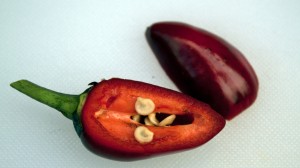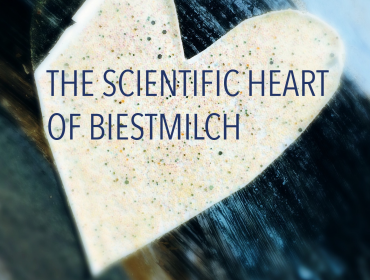My friend Fritz is an enthusiastic chili raiser. He loves the habaneros, which are the very very hot chilies.

Every year he pollenizes his plants to grow the next generation. This sounds like a very straightforward process, but it is not. Bumble-bees are masters of pollenization in the case of the chili plants. But it s also the bumble-bee that can mess everything up. With its dirty pants from another chili blossom it may eventually contribute to the modification of the genetic outfit of your next chili plant. Here is Fritz’ story, a story of disappointment, but a very good example about how genetic mutations and modifications take place around us every day without human interference.Would you think that Fritz’ chili is a genetically modified organism?
Like every year Fritz was waiting this year with great excitement and pleasure for the first chili fruits from his self-raised plants. The first ones that are ripe and turn from deep purple into red are the jalapenos. Fritz has just harvested the wonderful red chilies a few days ago – the summer was not too good here in Europe, so it took especially long for the guys this year to come red. He sliced one, took a bite, expected a hot and fruity taste with a heat of 7 degrees on Scolville chili scale (the hottest chili stuff has got 10 degrees). What a harsh disappointment, weak flavor, almost no hot taste that originates from the capsacain. This time the bumble-bee with the dirty pants had visited his garden 😉 The mix of genes obviously made the chili jump from the hot to the smooth side of the chili life.
Only disappointing in the first instance, at a closer look a beautiful detail of nature, that makes life a process of continuous unpredictable changes.
You may ask, what this story has to do with all my swine flu series? Viruses are very volatile creatures, they change and they mingle on their passage through different and even same beings. This is why the swine flu virus genes have got bird, swine and human parts.


